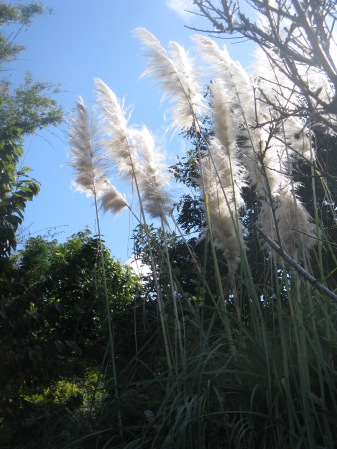With plumes that bring to mind ostrich feathers, pampas grass first became popular in the Victorian era. Fluffy seed heads…
Read More
pampas grass
Pigs and Pampas
At about 4000’ elevation, just east of Koʻolau Gap above Keʻanae on the island of Maui, a four foot tall…
Read More
Make National Invasive Species Week Last All Year
National Invasive Species Week is February 26 to March 3 of 2012. While it’s great to pay attention for the…
Read More
Pampas Grass: All Species on Maui are Invasive
In the early 1870s an enterprising nurseryman in Southern California imported a tall, clumping grass with distinctive feathery plumes to…
Read More
Pampas Gone Wild-Haipua‘ena Part 3
In the final installment of the “Pampas Gone Wild” series, we’ll cover some of the key identification features of pampas…
Read More




